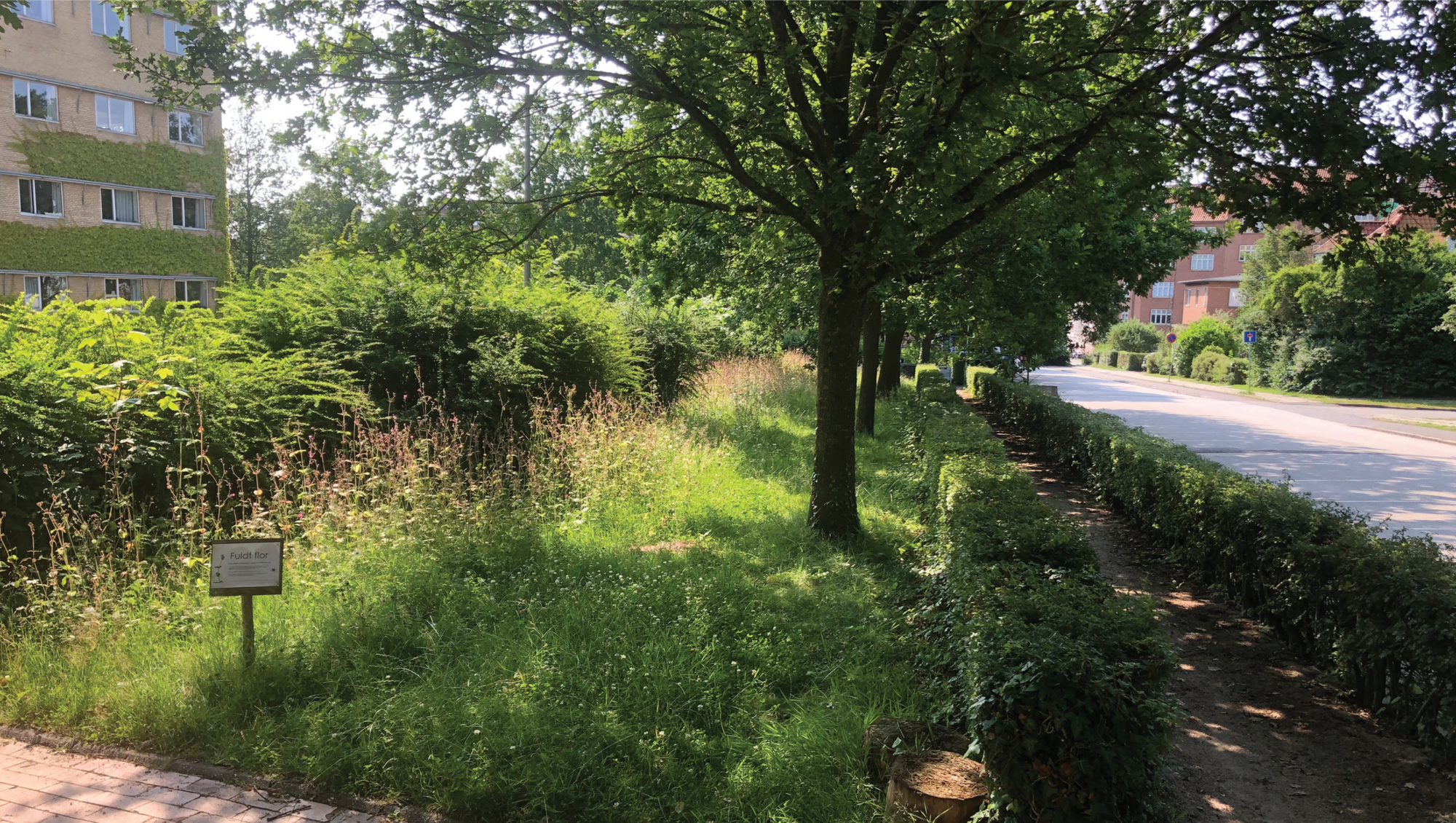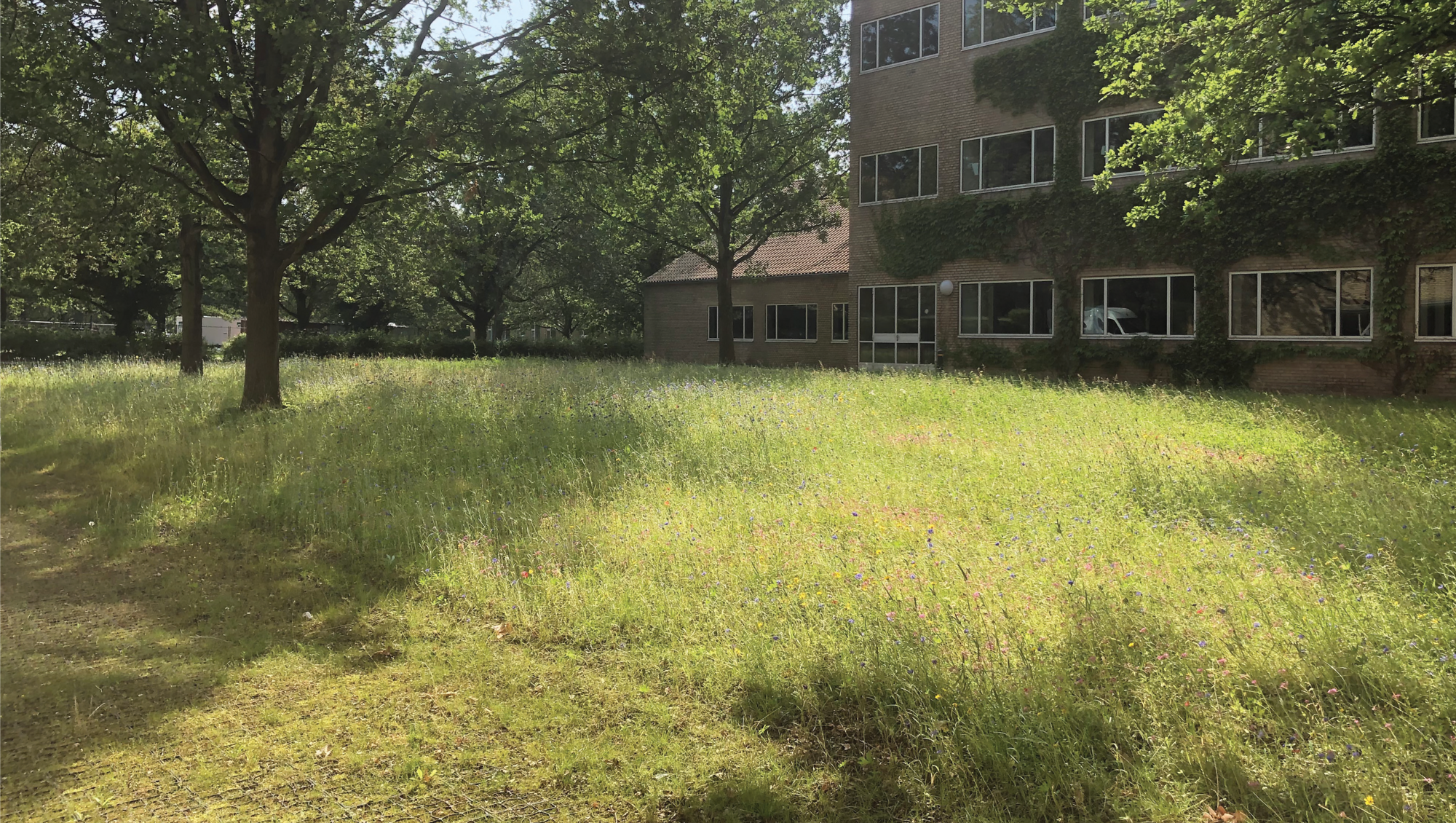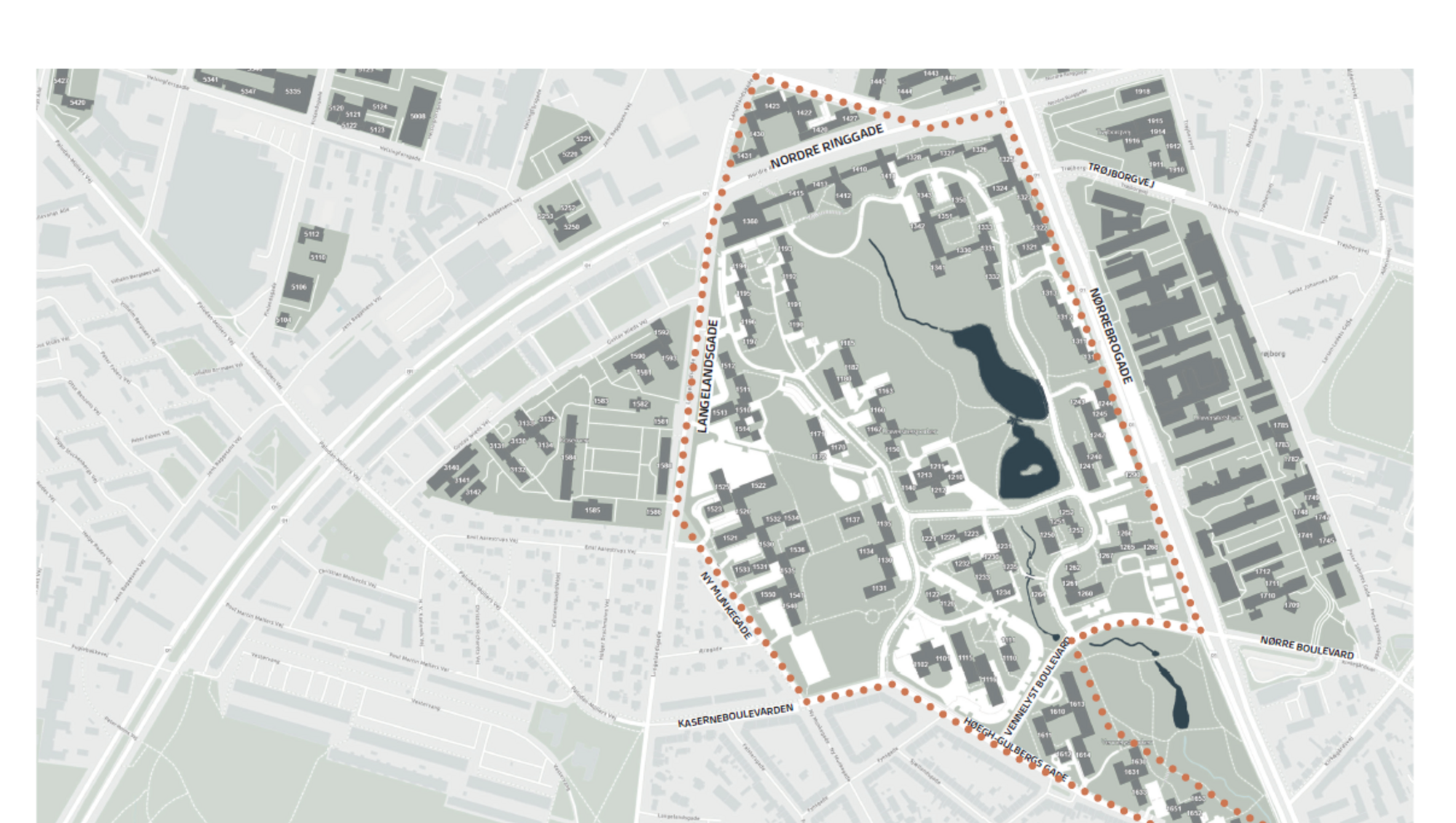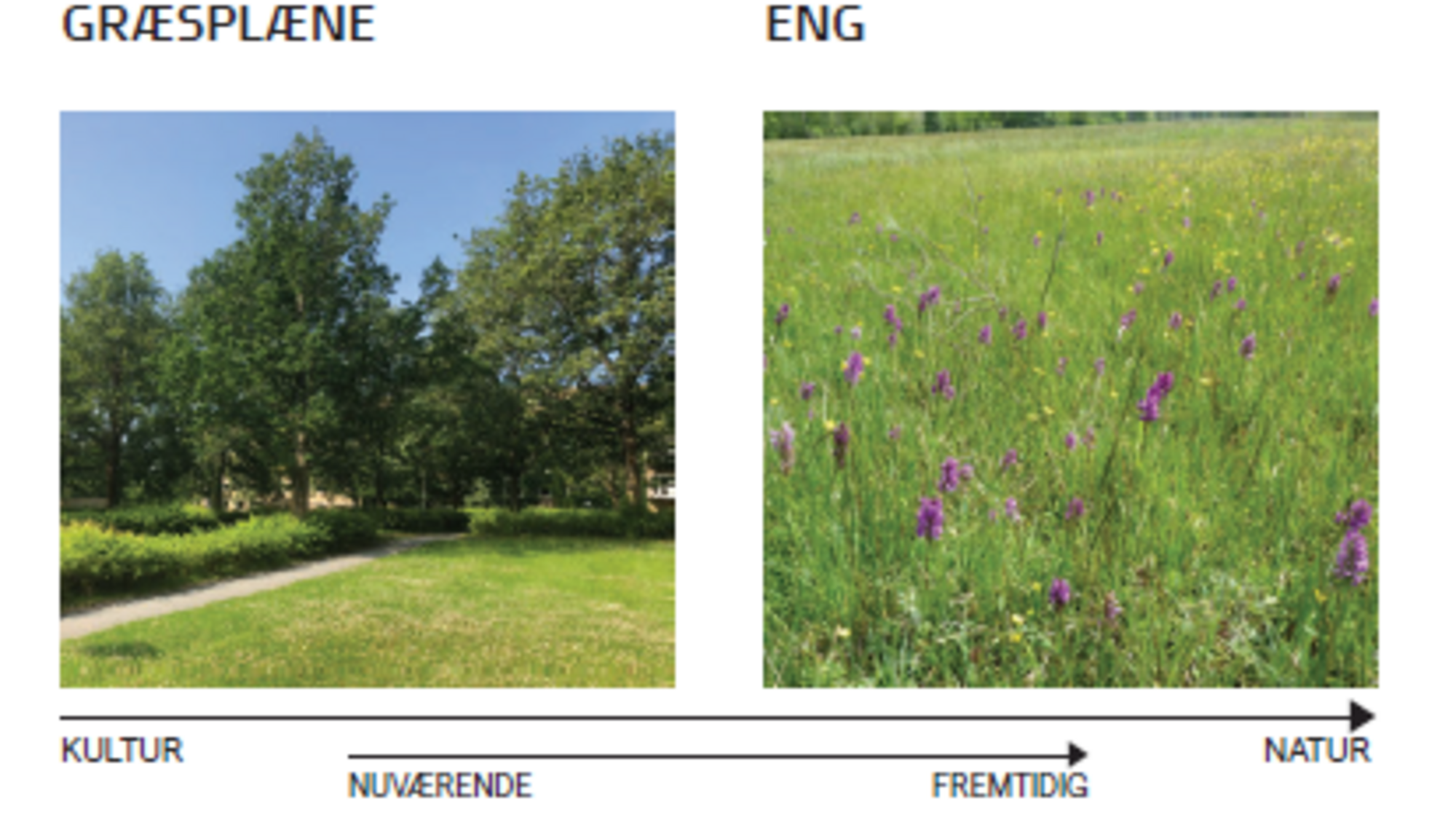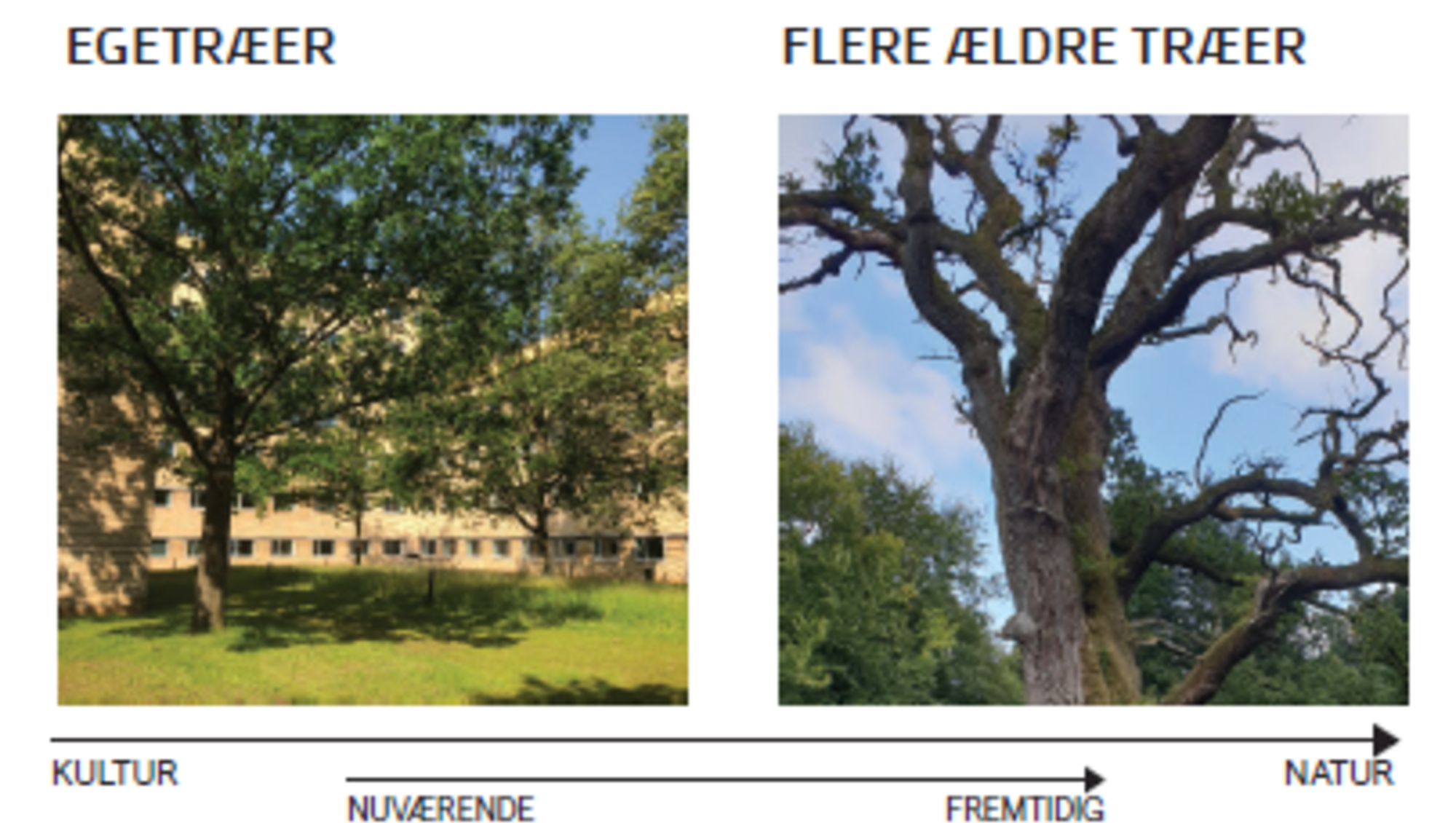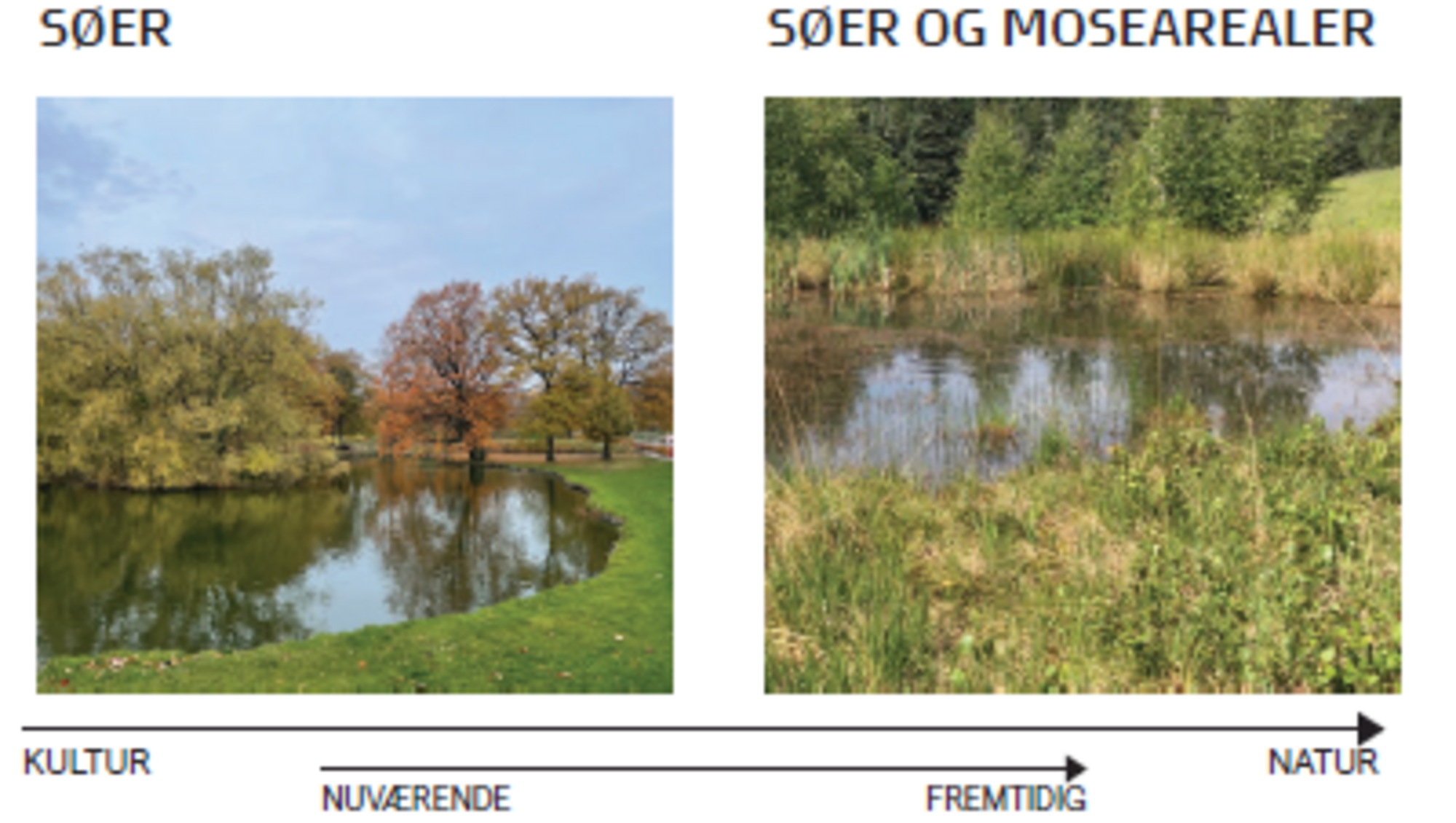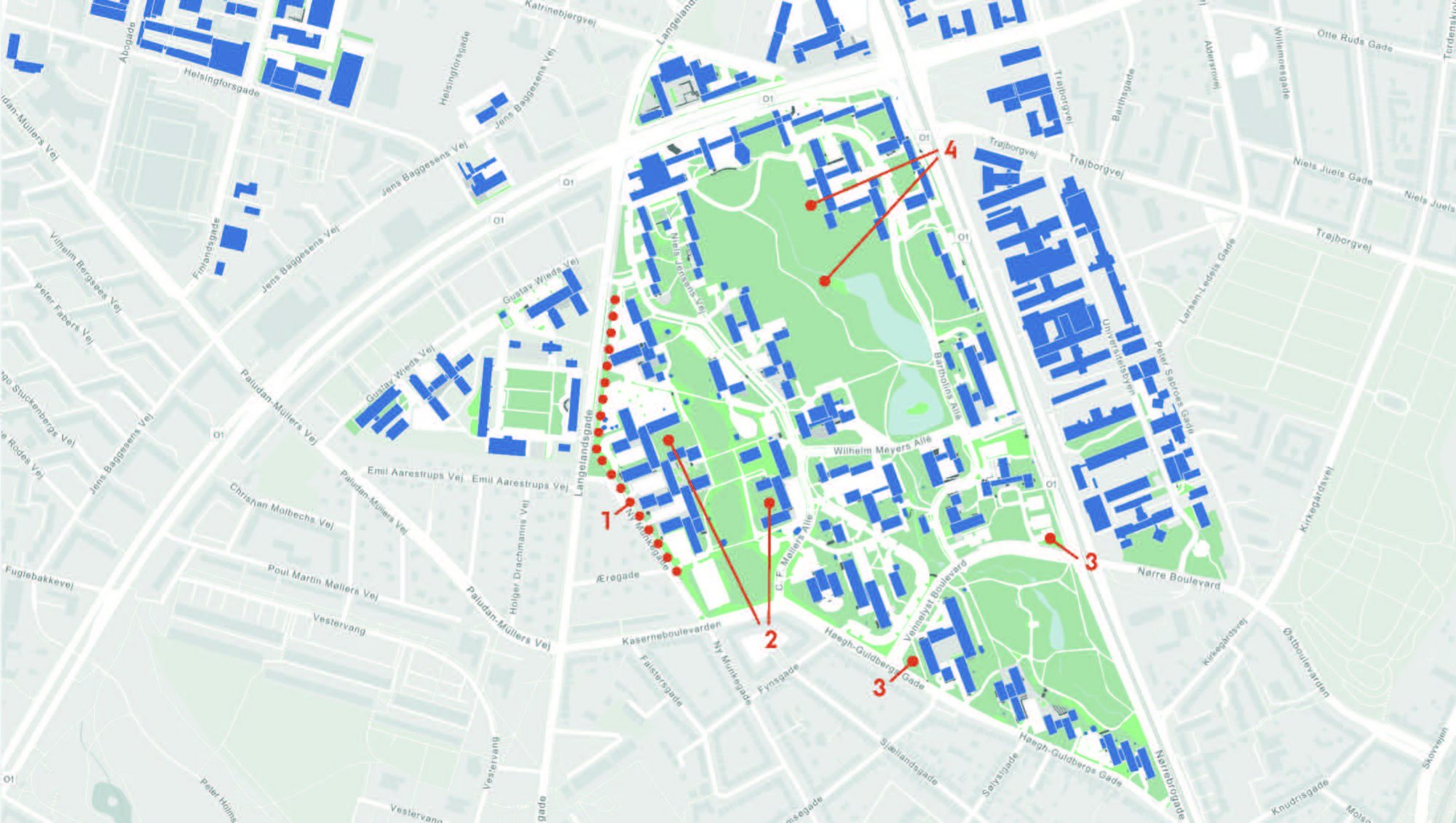Biodiversity at AU
In recent years, biodiversity at AU has been increased in a few selected areas. The coming years more trial areas will be allocated to biodiversity projects, which will contribute to the university’s sustainable development. Read more on this webpage.
Vision
The areas of biodiversity are part of the overall vision at AU for the sustainable development of campus. They can also be used for research, for teaching about ecosystems and plant and animal species, or as social meeting places.
These areas will also contribute to increasing local biodiversity. It is important that the areas can coexist with and contribute positively to the overall experience of the university's unique campus areas, also in environments worthy of preservation.
New trial areas
Where are the trial areas located?
- Four areas in the University Park
- An area in Emdrup
- An area on the Påskehøjgaard experimental fields in Ølsted
A number of new trial areas will be established in collaboration between the local operations managers, gardeners, researchers and students.
What is biodiversity?
Biodiversity refers to diversity and variety in living organisms (flora and fauna) in a given environment. The term covers the variety of different species but also the genetic variety within a single species as well as the variety of habitats and the interplay between different species.
Biodiversity, the number of different species, plants, animals and fungi, are affected by factors such as:
- Habitat variety: The more habitats (e.g. dry/damp areas, shadowy/sunny areas, nutrient rich or poor areas), the better the breeding ground for biodiversity.
- Area size: The greater the area, the better the chance of biodiversity.
- Continuity: Time is an important factor for the development of a given area’s nature and biodiversity.
- Resources and habitats: Species depend on areas that offer the right resources in terms of nourishment as well as suitable places to hide or to establish breeding grounds.
- Distance to existing natural areas: The closer a species’ existing habitat is to a new suitable habitat, the greater the chance of the species spreading there.
A green campus worthy of preservation
AU’s buildings in Aarhus are spread across a unique campus area, with the University Park (at approx. 200,000 m2) as its important centre. The University Park is made up of lakes, green hills and solitary oak trees, and it enjoys a special status as a cultural environment with a high preservation value and with several listed buildings and areas. This imposes certain limitations on which areas in the park can be allocated to biodiversity projects.
It is important that the university’s efforts to increase biodiversity contribute positively to the overall experience and use of its unique campus. Therefore, when deciding on possible uses of the University Park, both aesthetic and practical concerns will be taken into account. For example, how to introduce more native plant varieties, whether to change the way the plants are cared for, and to what extent areas of wilder nature can be included in the various sections of the park.
It is important that students, employees and the city’s residents are still able to stroll through and enjoy green areas, and that the University Park can be used for large events.
Existing areas
The following areas have already been designated as areas of biodiversity.
- The ‘Fuldt Flor’ areas: Two areas: one close to the Department of Ecoscience and the other along the watercourse behind the Lakeside Lecture Theatres.
- AU Garden near the intersection between Nordre Ringgade and Trøjborgvej in Aarhus.
- A courtyard area by building complex 1520 in the University Park.
The two ‘Fuldt Flor’ areas are maintained by staff and students, though AU gardeners are responsible for mowing the lawn.
Schedule and goals
Since 2021, Aarhus University has increased its focus on biodiversity when planning and maintaining the green areas of the University Park. This focus will help AU reach its goal of increasing the number of registered species in the University Park by 25% by 2025.
This goal can be achieved by:
- replacing border beds and shrubs with native varieties over time
- converting selected areas of lawn to meadows or grasslands
- laying out piles of dead wood, leaves and stones to increase the variety of habitats for several species of insects and animals.
Organisation
The work to increase biodiversity in AU’s green areas is managed by a working group that consists of:
- Special consultant at AU Estates Projects and Development – Campus Planning and Projects, Eva Holdgaard Jensen Flensborg ehjf@au.dk
- Head of building services, Aarhus BSS, Peter Bachmann Vestergaard pbv@au.dk
- External landscape architects and biologists.
The daily management of AU’s green spaces is carried out by AU’s gardeners, who are in charge of maintaining the green areas as well as sweeping and winter-proofing the pavements, paths and roads.
Questions?
If you have any questions or input for AU’s biodiversity work, feel free to contact Eva Flensborg
